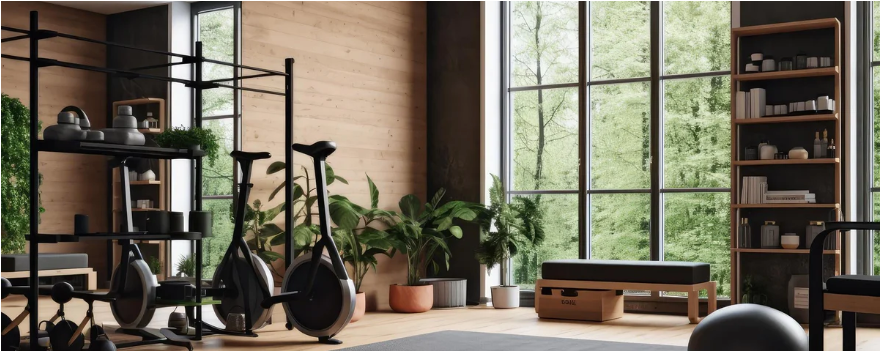
What Should I Consider When Building a Home Gym? A Step-by-Step Guide
|
|
Tempo de leitura 3 min
💶 Get £15 off your first order - Get Code Now
|
|
Tempo de leitura 3 min
Creating a home gym is one of the smartest investments you can make for your physical and mental wellbeing. Whether you're working with a spare room, garage, garden shed, or even a tiny corner of your flat, a smart home gym setup can help you hit your goals without hitting your wallet too hard. Here's your step-by-step guide on how to set up a home gym that works for your goals, your budget, and your space.
The first step to building a home gym is to understand the space you’re working with. Are you converting a guest bedroom? Clearing a corner of your living room? Or working with a backyard or garden shed? The space you choose will influence everything from the type of equipment to your workout intensity and routine.
Also think about your workout preferences. Do you love strength training? Cardio circuits? Low-impact yoga or Pilates? Let your goals guide your gear.
Tip: If you’re short on space, choose compact or multi-use tools like adjustable dumbbells or foldable benches to maximise flexibility.
A common misconception is that a quality gym setup needs to cost thousands. Spoiler: it doesn’t. You can build an effective home gym setup on a tight budget. Start by figuring out your maximum spend, and stick to essentials first.
Set a baseline budget and identify must-haves vs. nice-to-haves. Consider bundles, which often offer better value than buying items separately. Check out our bundles page or even mix-and-match your ideal setup using the Build Your Bundle feature.
Money-saving tip: Second-hand equipment marketplaces or refurbished items can offer big savings — just double-check for wear and safety before buying.
Your equipment list will depend on what you're training for. Here’s a quick breakdown to help you prioritize:
Multifunctional equipment like our Adjustable Kettlebell lets you do more with less gear, especially in small spaces.
Bonus: These tools aren’t just compact — they’re also ideal if you’re learning how to build a home gym on a budget.
You don’t need a flashy home studio to crush your workouts. Get creative with DIY and repurposed materials:
Want to take it further? Paint or decorate your workout area with motivational posters or calming colours that reflect your vibe.
Clutter kills motivation. A clean and inviting space keeps you consistent. Look into home gym storage ideas like:
A simple rack or shelf can transform a chaotic pile of gear into a space you’ll actually want to use.
Pro tip: If you're dealing with a tight space, opt for gear like adjustable dumbbells that eliminate the need for multiple sets.
You don’t need a personal trainer to get personal results. Use apps like Fitbod, Nike Training Club, or trusted YouTube channels to guide your routine. Many platforms let you tailor workouts by equipment, goals, and time.
Also explore free beginner plans on reputable fitness sources like ACE Fitness or NHS Fitness Studio.
Lastly, don’t compromise on safety. Always:
Once you’re confident and consistent, it’s time to upgrade gradually — more weight, more variety, more challenge.
Your perfect gym doesn’t need to be big, flashy, or expensive. It just needs to fit you. Explore product bundles, or start small with adjustable essentials and build as you go with the Build Your Bundle tool.
Remember: The most effective gym is the one you actually use. Keep it simple, safe, and tailored to your lifestyle — and you’ll be set for success.